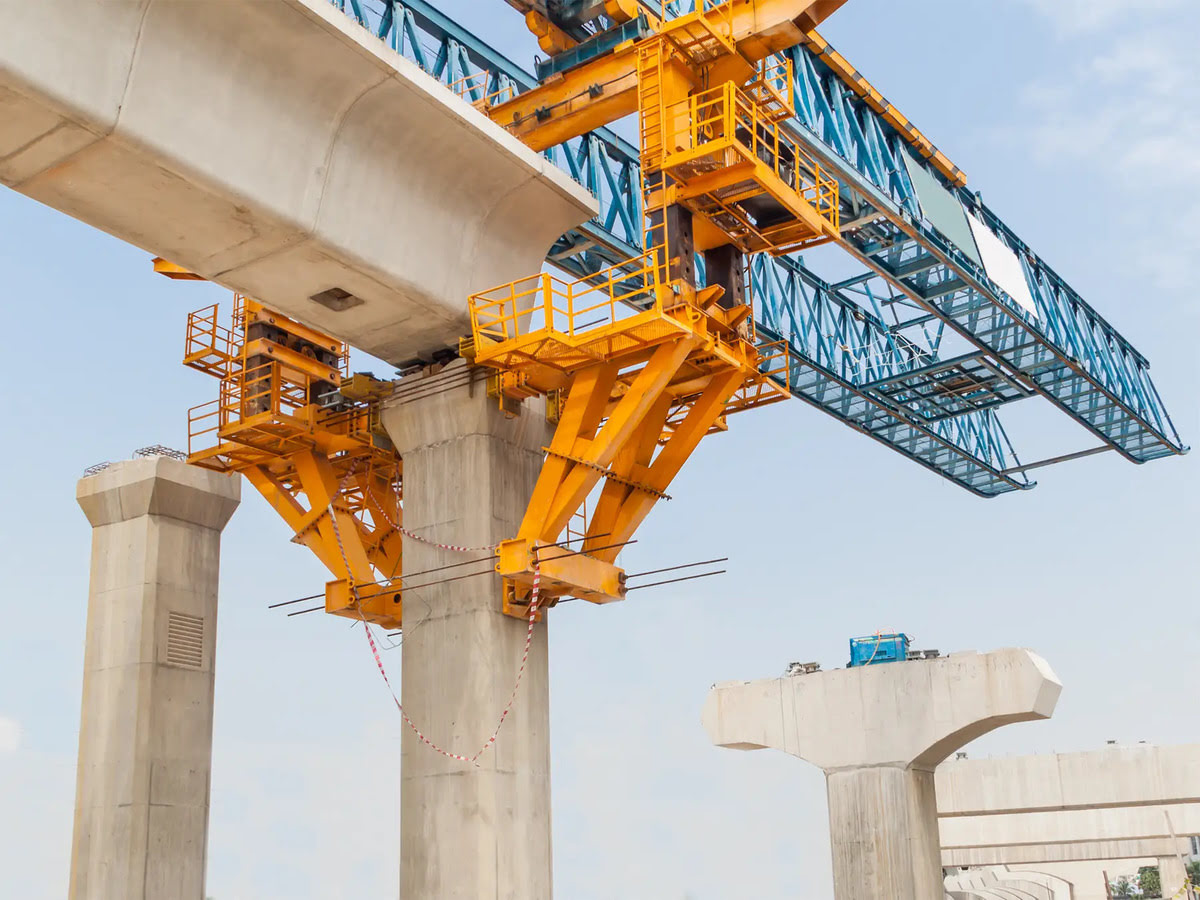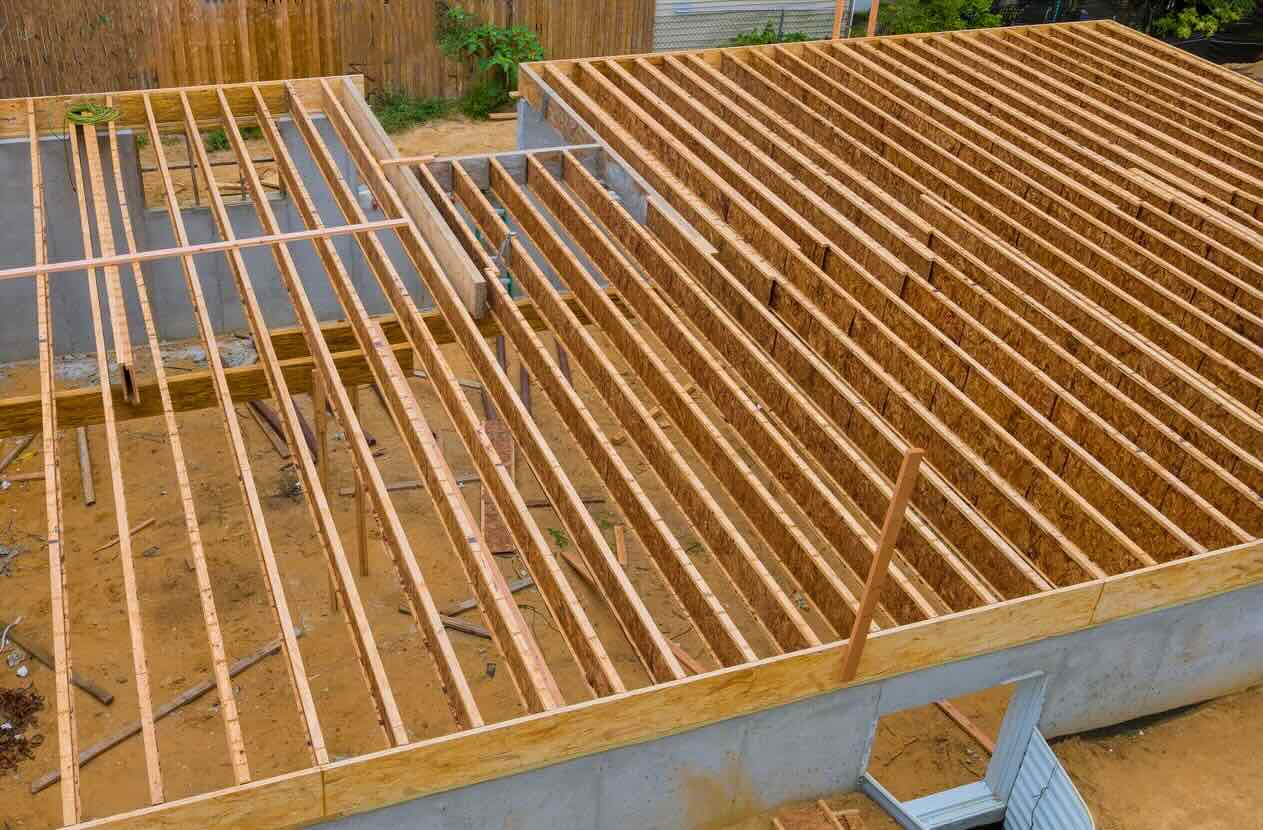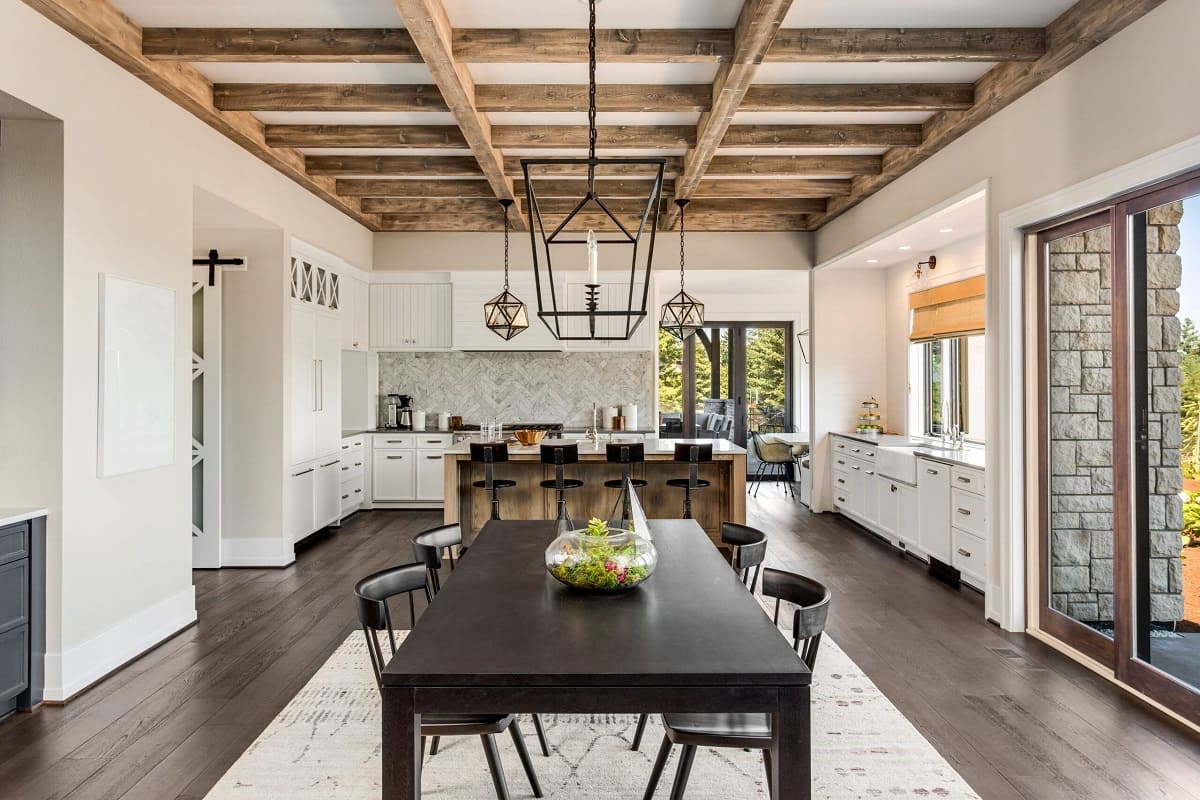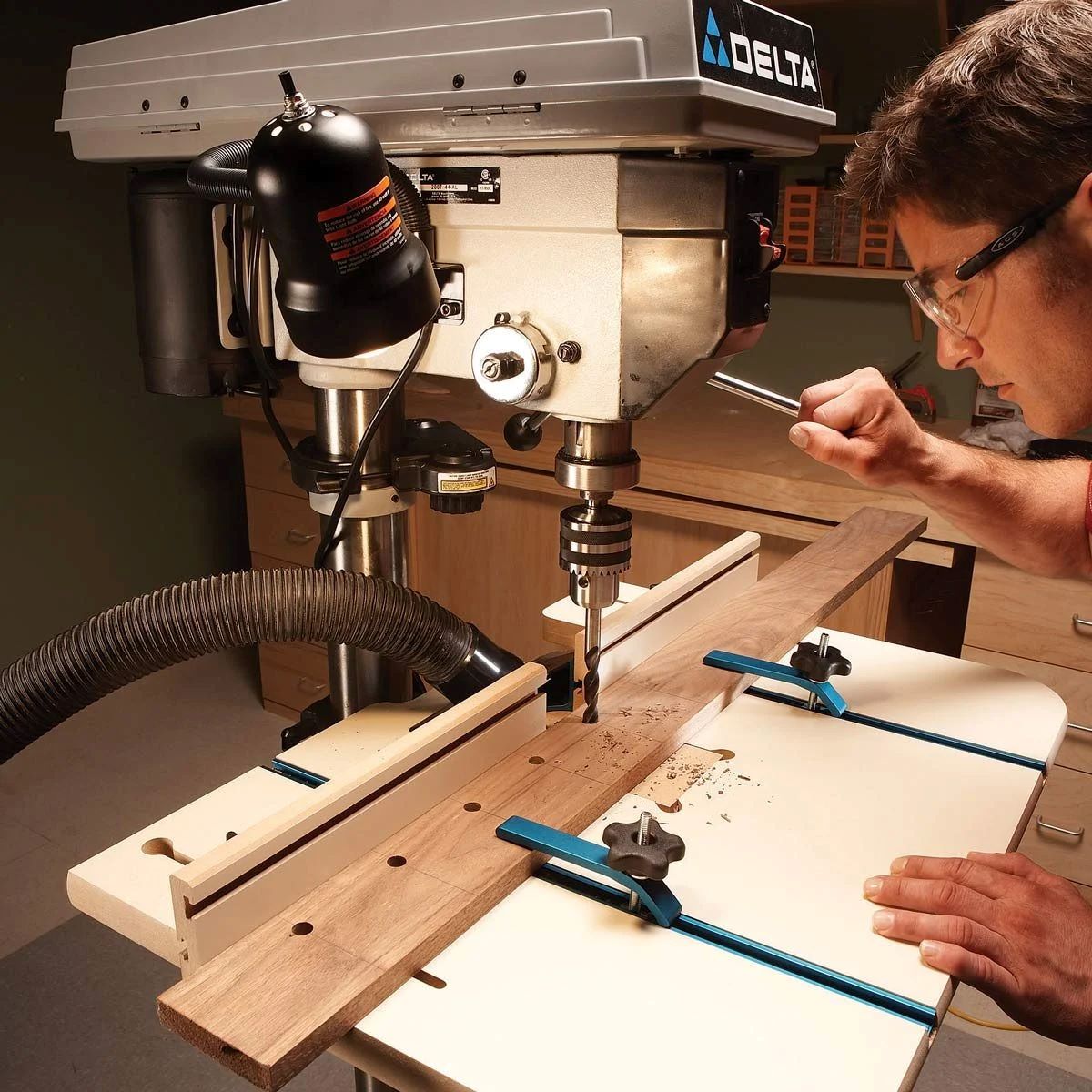Home>diy>Building & Construction>What Is The Ideal Material For Beam Bridge Construction


Building & Construction
What Is The Ideal Material For Beam Bridge Construction
Modified: December 7, 2023
Discover the ideal material for beam bridge construction and learn about the advantages of using it in building construction.
(Many of the links in this article redirect to a specific reviewed product. Your purchase of these products through affiliate links helps to generate commission for Storables.com, at no extra cost. Learn more)
Introduction
Welcome to the world of building construction, where innovation meets functionality to create structures that shape our cities and infrastructure. One fundamental aspect of construction is the construction of bridges, which plays a crucial role in connecting different regions and facilitating transportation. Among the various types of bridges, beam bridges are one of the most common and widely used.
A beam bridge is a simple and straightforward type of bridge that consists of horizontal beams supported by piers or abutments on either end. These beams, also known as girders, carry the load of the bridge and transfer it to the supports. Beam bridges are known for their simplicity in design, ease of construction, and cost-effectiveness.
When it comes to constructing a beam bridge, one of the most critical factors is the selection of the material. The choice of material can significantly impact the performance, durability, and overall functionality of the bridge. This article will delve into the importance of material selection for beam bridge construction and highlight the factors to consider when choosing the ideal material.
When designing and constructing a beam bridge, there are several factors that engineers and designers need to take into account. The material selection process considers various aspects such as the span length, anticipated loads, environmental conditions, budget, and availability of materials. Each factor plays a crucial role in determining the ideal material for beam bridge construction.
Let’s explore some of the most common materials used in beam bridge construction and analyze their advantages and disadvantages. By understanding the characteristics and performance of different materials, we can identify the ideal material that provides optimal strength, durability, and cost-efficiency for beam bridge construction.
So, join us as we take a deep dive into the world of beam bridge construction materials, and discover the perfect combination of innovation and functionality that defines the ideal material for beam bridge construction.
Key Takeaways:
- The ideal material for beam bridge construction depends on factors such as span length, load-bearing capacity, environmental conditions, maintenance, cost, and sustainability. Steel and reinforced concrete are often considered ideal due to their strength and versatility.
- Material selection for beam bridge construction is crucial for structural integrity, load-bearing capacity, environmental resistance, cost-effectiveness, and sustainability. Engineers must carefully evaluate these factors to ensure the optimal performance and longevity of the bridge.
Read more: What Is A Beam In Construction
Definition of Beam Bridge
A beam bridge is a type of bridge that consists of horizontal beams, also known as girders, supported by piers or abutments on either end. It is one of the simplest and oldest forms of bridge construction, dating back to ancient civilizations. Beam bridges are designed to carry various loads, such as vehicles, pedestrians, and even trains, across a span.
The primary load-bearing element in a beam bridge is the beam or girder. Beams are typically made of steel, concrete, or timber, and their size and strength depend on the length of the span and the loads they are expected to carry. The beams are supported by vertical supports called piers or abutments, which anchor the bridge and distribute the weight to the underlying foundation.
Beam bridges can be constructed in various configurations, including simply supported, continuous, and cantilever. In a simply supported beam bridge, the beams are supported at each end by piers or abutments, allowing the bridge to span the gap between them. Continuous beam bridges have additional supports in between the end supports, providing better load distribution and reducing the stress on the beams. Cantilever beam bridges are built by extending the beams from one or both ends, supported by temporary scaffolding until the beams meet in the middle.
What makes beam bridges popular is their simplicity and cost-effectiveness. They are relatively easy to design and construct, making them ideal for short to medium span lengths. Beam bridges are commonly used for roadways, pedestrian walkways, and railway crossings.
However, it’s important to note that beam bridges have limitations. Their span lengths are typically shorter compared to other types of bridges, and they may not be suitable for spanning wide or deep bodies of water. In such cases, other bridge types like truss bridges, arch bridges, or suspension bridges may be more suitable.
Beam bridges have stood the test of time, showcasing the ingenuity of engineers and the versatility of different construction materials. By understanding the principles behind beam bridges, we can appreciate their historical significance and their continued importance in modern bridge construction.
Importance of Material Selection for Beam Bridge Construction
When it comes to constructing a beam bridge, the selection of materials is of utmost importance. The choice of material can significantly impact the performance, durability, and overall functionality of the bridge. Here are some key reasons why material selection is crucial in beam bridge construction:
- Structural Integrity: The material used for the beams directly affects the structural integrity of the bridge. It needs to have sufficient strength and stiffness to carry the anticipated loads without excessive deflection or deformation. By selecting the right material, engineers can ensure that the bridge maintains its structural integrity over its lifespan.
- Load-Bearing Capacity: Different materials have different load-bearing capacities. The chosen material must have the strength to support the expected loads, including the weight of vehicles, pedestrians, and any additional live loads. The material should be able to distribute the load evenly along the span to avoid overloading certain sections of the bridge.
- Resistance to Environmental Factors: Bridges are exposed to various environmental factors such as temperature fluctuations, moisture, and corrosive elements. The material selected should possess the necessary resistance to these factors to ensure the longevity of the bridge. For example, steel beams may require protective coatings to prevent rusting, while concrete beams may need proper reinforcement against cracking due to temperature changes.
- Availability and Cost: The availability and cost of materials play a significant role in the selection process. It is important to choose a material that is readily available in the desired quantity and quality. Additionally, considering the project budget, selecting a cost-effective material is essential to ensure the feasibility of the bridge construction.
- Sustainability and Environmental Impact: In today’s environmentally conscious world, sustainability is a key consideration in construction projects. Selecting materials that are environmentally friendly, recyclable, or have a low carbon footprint can help reduce the overall environmental impact of the bridge construction. This includes considering the energy required for manufacturing and transportation of the materials.
By carefully considering these factors, engineers and designers can make informed decisions about the material selection for beam bridge construction. They can choose materials that provide the necessary strength, durability, and resistance to environmental factors while keeping the project budget and sustainability goals in mind.
The process of material selection involves evaluating the properties, limitations, and advantages of various materials, such as steel, concrete, timber, or composite materials. Each material has its unique characteristics, and the selection should be based on a thorough analysis of the specific project requirements and constraints.
By prioritizing material selection in beam bridge construction, engineers can ensure the creation of safe, reliable, and long-lasting structures that serve their intended purpose for years to come.
Factors to Consider in Material Selection for Beam Bridge Construction
When it comes to selecting the material for beam bridge construction, several factors need to be carefully considered. These factors play a critical role in determining the ideal material that meets the project requirements and ensures the longevity and safety of the bridge. Here are some key factors to consider during the material selection process:
- Span Length: The length of the span is an essential factor in material selection. Different materials have different load-bearing capacities and deflection capabilities. For longer spans, materials with higher strength and stiffness, such as steel or reinforced concrete, may be more suitable.
- Anticipated Loads: Understanding the anticipated loads the bridge will be subjected to is crucial. This includes considering the weight of vehicles, pedestrians, and any additional live loads like snow or wind. The selected material should have the necessary load-carrying capacity to safely support these loads without deformation or failure.
- Environmental Conditions: The environmental conditions in the bridge’s location can significantly impact the material selection. Factors such as temperature fluctuations, moisture exposure, and exposure to corrosive elements like saltwater or chemicals should all be taken into account. Materials that are resistant to corrosion, temperature changes, and deterioration due to environmental factors should be preferred.
- Availability and Cost: The availability and cost of materials are practical considerations in any construction project. It is important to choose materials that are readily available in the desired quantity and quality to ensure timely project completion. Additionally, considering the project budget, selecting a cost-effective material is necessary to maintain economic feasibility.
- Construction Method: The chosen material should align with the construction method that will be used for the beam bridge. Different materials may require specific construction techniques and equipment. For example, steel beams may require welding or bolting, while concrete beams may need formwork and curing processes.
- Maintenance and Durability: Consider the long-term maintenance and durability requirements of the bridge. Some materials may require regular inspections, repairs, or protective coatings to ensure their longevity. Choosing materials that have a proven track record of durability and reduced maintenance can result in cost savings over the bridge’s life cycle.
- Sustainability: In today’s environmentally conscious world, sustainability plays an important role in material selection. Evaluating the environmental impact of the materials, their recyclability, and their carbon footprint can help in selecting eco-friendly options that align with sustainability goals.
By carefully evaluating these factors and their interplay, engineers and designers can make informed decisions about the material selection for beam bridge construction. It is crucial to strike a balance between strength, durability, cost-effectiveness, and environmental considerations to ensure the optimal performance and longevity of the bridge.
Ultimately, the material selected should be able to meet the requirements of the specific project, considering factors such as span length, anticipated loads, environmental conditions, availability, cost, construction method, maintenance, and sustainability. By considering these factors comprehensively, engineers can choose the ideal material that provides the necessary strength, durability, and performance for the beam bridge construction.
When choosing a material for beam bridge construction, consider factors such as cost, availability, strength, and durability. Steel and concrete are commonly used due to their high strength-to-weight ratio and resistance to corrosion.
Common Materials Used for Beam Bridge Construction
Beam bridges can be constructed using a variety of materials, each offering unique characteristics and advantages. The choice of material depends on factors such as span length, anticipated loads, environmental conditions, and budget considerations. Here are some common materials used for beam bridge construction:
- Steel: Steel is one of the most commonly used materials for beam bridges. It offers high strength-to-weight ratio, excellent structural integrity, and durability. Steel beams can be prefabricated offsite, allowing for quick and efficient construction. Steel bridges are known for their versatility, as they can span long distances and withstand heavy loads. However, steel bridges may require regular maintenance to prevent corrosion.
- Reinforced Concrete: Reinforced concrete is another popular material for beam bridge construction. It combines the compressive strength of concrete with the tensile strength of reinforcing steel bars. Reinforced concrete offers excellent durability, fire resistance, and versatility in design. It can be molded into various shapes and sizes, allowing for customized bridge designs. However, reinforced concrete bridges may require proper maintenance and periodic inspections to prevent cracking and deterioration.
- Prestressed Concrete: Prestressed concrete is a specialized type of concrete used in beam bridges. It involves pre-tensioning or post-tensioning steel wires or tendons within the concrete to create compressive forces. This process increases the load-carrying capacity and reduces the effects of potential cracking. Prestressed concrete bridges offer enhanced structural strength, longer spans, and reduced maintenance compared to reinforced concrete.
- Timber: Timber has been used for centuries in bridge construction. It offers a natural and aesthetically pleasing option for beam bridges. Timber beams are lightweight, easy to handle, and provide good resistance to fatigue. Timber bridges are often used in rural areas and for pedestrian or light vehicle applications. However, timber bridges require regular maintenance to prevent decay, insect infestation, and warping.
- Composite Materials: Composite materials, such as fiber-reinforced polymers (FRP) or carbon fiber-reinforced polymers (CFRP), are gaining popularity in bridge construction. These materials offer high strength-to-weight ratio, corrosion resistance, and reduced maintenance requirements. Composite beams can be customized for specific design requirements and are lighter compared to traditional materials. However, the high cost of composite materials may limit their use to specific bridge applications.
Each material has its own advantages and limitations, and the selection should be based on the specific project requirements and constraints. It is crucial to evaluate factors such as strength, durability, maintenance, cost, and environmental impact when choosing the material for beam bridge construction.
By carefully considering these common materials and their respective properties, engineers and designers can make informed decisions that result in safe, reliable, and cost-effective beam bridges that are suitable for their intended purpose.
Read more: What Are Beams Used For In Construction
Advantages and Disadvantages of Different Materials Used for Beam Bridge Construction
When it comes to selecting materials for beam bridge construction, it is essential to consider the advantages and disadvantages of each option. Here are the advantages and disadvantages of the common materials used in beam bridge construction:
- Steel:
- Advantages:
- High strength-to-weight ratio, allowing for longer spans and increased load-carrying capacity.
- Excellent structural integrity and durability.
- Versatility in design and construction.
- Quick and efficient construction due to offsite fabrication.
- Disadvantages:
- Potential for corrosion, requiring regular maintenance and protective coatings.
- Higher material and construction costs compared to other options.
- Reinforced Concrete:
- Advantages:
- Good compressive strength and durability.
- Fire resistance.
- Versatility in design and customization.
- Ability to withstand heavy loads.
- Disadvantages:
- Potential for cracking and deterioration, requiring regular maintenance and inspections.
- Longer construction time compared to other materials.
- Prestressed Concrete:
- Advantages:
- Enhanced structural strength, allowing for longer spans and reduced deflection.
- Reduced maintenance compared to reinforced concrete.
- Improved durability and resistance to cracking.
- Disadvantages:
- Complex design and construction process.
- Higher material and construction costs compared to reinforced concrete.
- Specialized expertise required for design, installation, and maintenance.
- Timber:
- Advantages:
- Natural and aesthetically pleasing appearance.
- Lightweight and easy to handle.
- Good resistance to fatigue.
- Disadvantages:
- Potential for decay, insect infestation, and warping, requiring regular maintenance.
- Limited lifespan compared to other materials.
- Restricted use for specific applications and load capacities.
- Composite Materials:
- Advantages:
- High strength-to-weight ratio, allowing for lighter structures and improved load-carrying capacity.
- Corrosion resistance and reduced maintenance requirements.
- Customizable design options for specific requirements.
- Disadvantages:
- Higher material costs compared to traditional options.
- Limited use to specific applications due to cost constraints.
- Specialized expertise required for design, fabrication, and installation.
These advantages and disadvantages highlight the trade-offs involved in material selection for beam bridge construction. Engineers and designers must weigh the specific project requirements, such as span length, anticipated loads, budget, and maintenance considerations, to make an informed decision about the most suitable material for their bridge construction project.
Ideal Material for Beam Bridge Construction
Choosing the ideal material for beam bridge construction requires a thorough analysis of project requirements and constraints. While each material has its advantages and disadvantages, certain factors can help determine the ideal material for a specific bridge project. Here are some factors to consider in identifying the ideal material:
- Span Length: For longer span lengths, materials with high strength and stiffness, such as steel or prestressed concrete, may be more suitable. They offer the necessary load-carrying capacity and minimize deflection over extended distances.
- Load-Bearing Capacity: The ideal material should have sufficient strength to support the anticipated loads without excessive deflection or deformation. It should be able to distribute the load evenly along the span to prevent overloading individual sections of the bridge.
- Environmental Conditions: Consideration should be given to the environmental factors that the bridge will be exposed to, such as temperature fluctuations, moisture, and corrosive elements. Materials that have proven resistance to these conditions, such as corrosion-resistant steel or high-quality concrete with protective coatings, are preferable.
- Maintenance and Durability: The material chosen should offer durability and require minimal maintenance over the bridge’s lifespan. Factors such as resistance to corrosion, cracking, and deterioration due to environmental factors should be considered to reduce long-term maintenance costs and extend the bridge’s service life.
- Availability and Cost: The ideal material should be readily available in the desired quantity and quality. Additionally, it should be cost-effective and align with the project budget. Finding a balance between material availability, cost, and performance is crucial in selecting the ideal material.
- Sustainability: Considering the environmental impact of the material is essential in today’s construction practices. Opting for sustainable materials, such as recycled steel or environmentally friendly composites, can reduce the project’s carbon footprint and align with sustainability goals.
Based on these factors, steel and reinforced concrete are often considered the ideal materials for beam bridge construction. Steel offers high strength, versatility, and ease of fabrication, making it suitable for various bridge designs and span lengths. Reinforced concrete provides durability, fire resistance, and customization options. It is particularly desirable for shorter to medium-span bridges.
However, it’s important to note that the ideal material may vary depending on the specific project requirements and constraints. Other materials, such as prestressed concrete, timber, or composite materials, may be more suitable in certain situations.
Ultimately, the ideal material is one that meets the project’s technical, functional, and economic requirements. It should provide the necessary strength, durability, and cost-effectiveness, while considering factors such as span length, anticipated loads, environmental conditions, maintenance, and sustainability. By carefully evaluating these considerations, engineers and designers can make an informed decision to select the ideal material for beam bridge construction.
Conclusion
Beam bridges play a vital role in our infrastructure, connecting communities and facilitating the movement of people and goods. Choosing the right material for beam bridge construction is of paramount importance in ensuring the bridge’s performance, durability, and overall functionality. Throughout this article, we have explored the significance of material selection and examined the factors to consider when choosing the ideal material.
We discussed common materials used in beam bridge construction, including steel, reinforced concrete, prestressed concrete, timber, and composite materials. Each material offers unique advantages and disadvantages, and their suitability depends on various factors such as span length, anticipated loads, environmental conditions, and project budget.
While steel and reinforced concrete are often considered the ideal materials for beam bridge construction due to their strength, versatility, and durability, it is important to make material selection decisions based on the specific project requirements. Factors such as span length, load-bearing capacity, environmental conditions, maintenance requirements, availability, cost, and sustainability should all be carefully evaluated.
Furthermore, advancements in technology and the development of innovative materials may continue to expand the range of options for beam bridge construction. Engineers and designers must stay up-to-date with these advancements to optimize the performance, efficiency, and sustainability of future bridge projects.
In conclusion, selecting the ideal material for beam bridge construction requires a comprehensive understanding of project requirements, material properties, and considerations of performance, cost, and sustainability. By carefully evaluating these factors and making informed decisions, we can ensure the construction of safe, reliable, and durable beam bridges that enhance the connectivity and infrastructure of our communities for generations to come.
Frequently Asked Questions about What Is The Ideal Material For Beam Bridge Construction
Was this page helpful?
At Storables.com, we guarantee accurate and reliable information. Our content, validated by Expert Board Contributors, is crafted following stringent Editorial Policies. We're committed to providing you with well-researched, expert-backed insights for all your informational needs.















0 thoughts on “What Is The Ideal Material For Beam Bridge Construction”